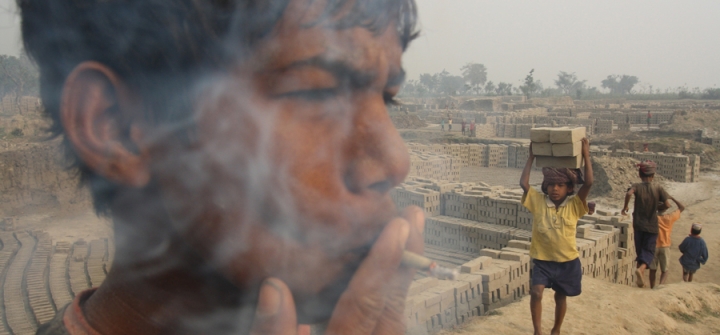Powering Up to Fight Tobacco
Of the many steps governments can take to prevent people from getting sick, none can save more lives than reducing tobacco use.
Around the world, 1 in every 10 deaths is caused by tobacco. In the 20th century, tobacco use killed 100 million people, far more than World War I and II—and most of the other major wars of the past century—combined. In the 21st century, unless we act, tobacco could kill a billion people.
The good news is: efforts are underway to stop this from happening. Over the past decade, WHO Global Ambassador for Noncommunicable Diseases Mike Bloomberg and his foundation Bloomberg Philanthropies has invested nearly $1 billion in work with the WHO and other partners to spread policies—collectively called by the acronym MPOWER—that are proven to reduce tobacco use and protect people from its deadly effects. These policies fall into 6 categories: measuring tobacco use, protecting people from second-hand smoke, offering help to people who want to quit, warnings that alert people to health impacts and bans on tobacco ads, enforcing bans on tobacco advertising, marketing, and promotion, and raising taxes to reduce tobacco use, especially among kids.
Last month, WHO released its 6th Report on the Global Tobacco Epidemic, which highlights promising progress. 10 years ago, only 1 in 7 people was covered by an MPOWER tobacco control measure. Today, nearly 2/3rds of the world’s population is covered by at least 1 of these measures. Over that time, global sales of cigarettes began to decline for the first time since mass production began more than a century ago. This progress will save more than 30 million lives.
But the report also serves as a stark reminder that while we’re heading in the right direction, we’re moving far too slowly. Adult smoking rates fell from nearly 24% in 2007 to around 21% today—but that means that more than 1 in 5 adults still smoke. Tobacco kills more than 7 million people every year. Most live in low- and middle-income countries, where smoking rates are declining far more slowly than in wealthier countries—and where rates are increasing in some countries. As tobacco companies have lost customers in Europe and the US, they are ramping up their marketing in developing countries to attract new users—and fighting every effort to protect people from their deadly products. Recent investigative journalism highlights that the tobacco industry continues to bribe, bully and sue in court to sell more cigarettes and kill more people, and continues working to undermine global progress.
1 MPOWER policy is better than none, but we must help countries adopt comprehensive packages of policies to prevent more needless suffering and death.
We’ve seen in New York City how quickly dramatic progress can be made. Between 2002 and 2010 we made all workplaces smoke-free, increased tobacco taxes, ran hard-hitting anti-tobacco ads, and helped smokers quit. At first, these measures weren’t easy to implement. But now a pack of cigarettes in New York City now costs around $12. Smoke-free workplaces—initially controversial—are now accepted and appreciated as a healthy norm. And some city council members objected to spending city budget dollars on hard-hitting ads, but we were able to show that the ads saved lives. The results show that it was worth the effort: the city smoking rate fell by 1/3 (from nearly 22% to approximately 14%), and by more than 1/2 (from approximately 18% to 8% or lower) among teens.
Bloomberg Philanthropies is working with WHO and others to help the 13 largest developing countries adopt more of these measures. If just those countries adopt the whole package of MPOWER policies, nearly 200 million lives could be saved. Countries that fail to implement the policies that will prevent those deaths are condemning their own citizens to avoidable suffering, disability, and death. The fact that these policies cost little or no money to implement (tobacco taxes invariably increase revenue, even if smoking decreases) highlights both the importance of good leadership and governance, and the death-promoting role that the tobacco industry continues to play.
The new WHO report also provides important insights on where to focus efforts. Although raising taxes is the single most effective way to reduce smoking, it’s the least-used MPOWER measure. Only 10% of the world is covered by recommended levels of tobacco taxes. These taxes not only drive down smoking rates, but they also raise revenue that governments can use to invest in public health measures.
Helping more countries raise taxes on tobacco would save many lives. So would better data on tobacco use. Only about 1 in 3 countries have comprehensive monitoring systems in place to measure the scale of the problem and what progress is being made.
Tobacco is the only commercially available product that, if used as intended, kills you. Progress is possible through low-cost and easy-to-implement policies. We’ve come a long way in 10 years – reversing a century of momentum created by addiction and nefarious tobacco industry activities.
But if we are to prevent tobacco from killing 1 billion people by the end of this century, we must accelerate our efforts—both in the US and around the world.
Thomas R. Frieden, MD, MPH, is the former director of the US Centers for Disease Control and Prevention.
Join the thousands of subscribers who rely on Global Health NOW summaries and exclusive articles for the latest public health news. Sign up for our free weekday enewsletter, and please share the link with friends and colleagues: Subscribe to GHN
A 15-year-old child laborer, smokes a bidi (leaf-rolled tobacco cigar) while working in a brick factory at Ghanashyampur village in Murshidabad, 350 km north of Kolkata, India. © 2010 Suchetadas, Courtesy of Photoshare




